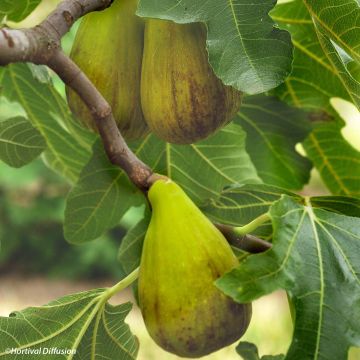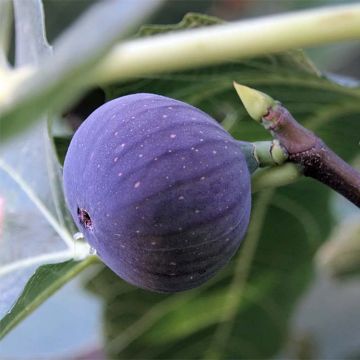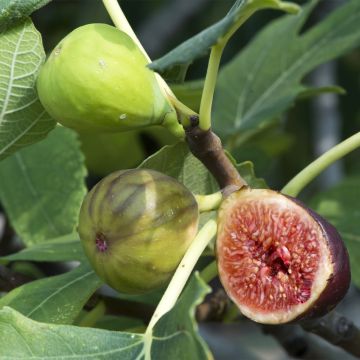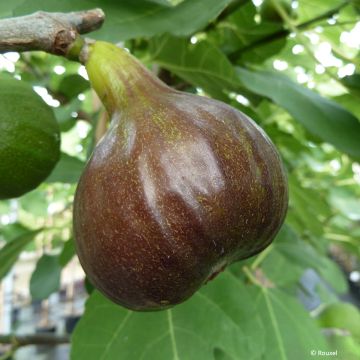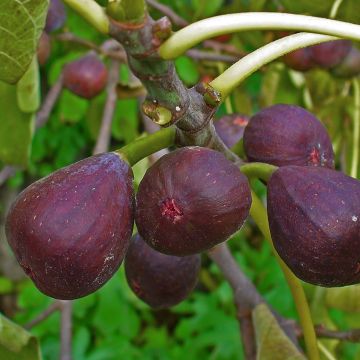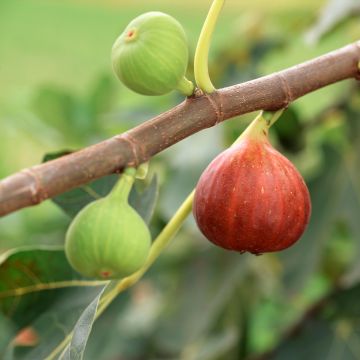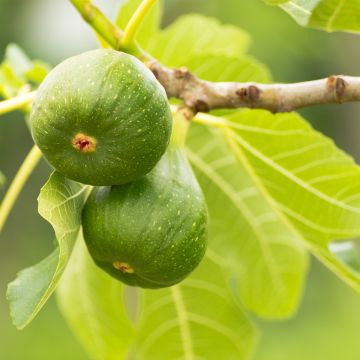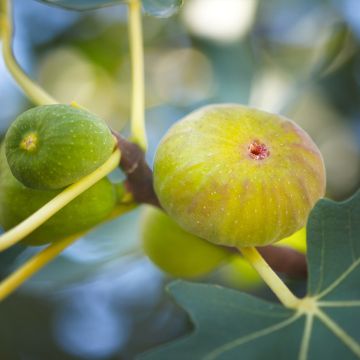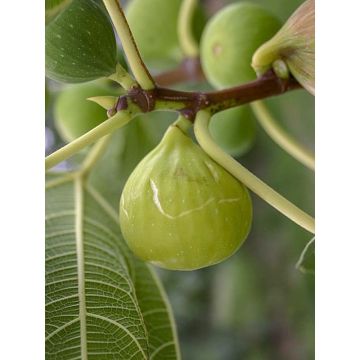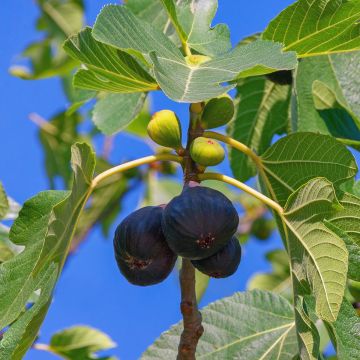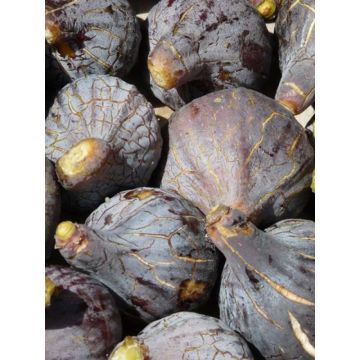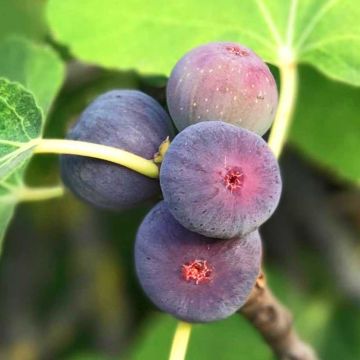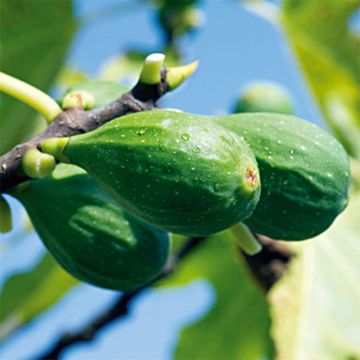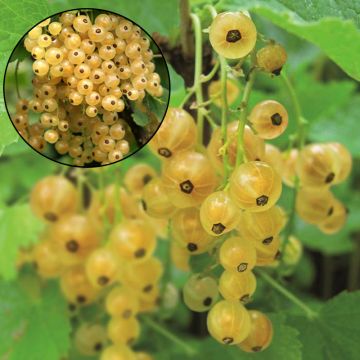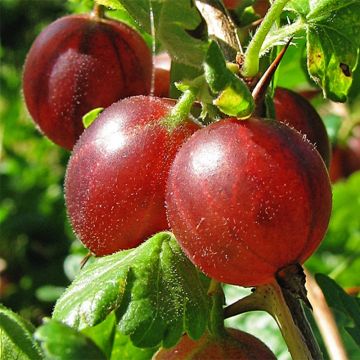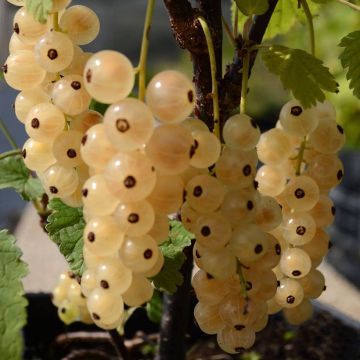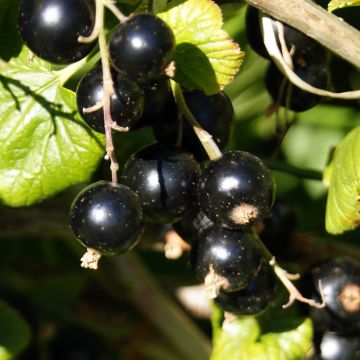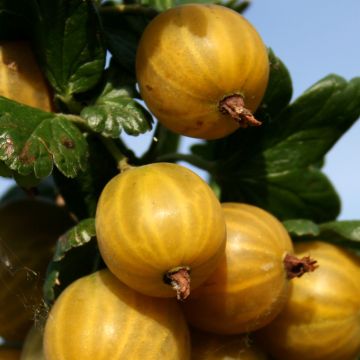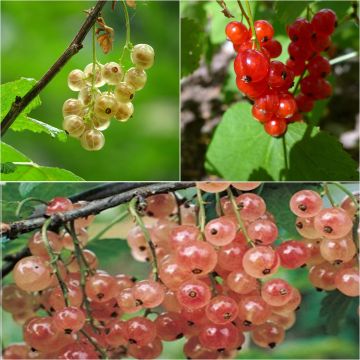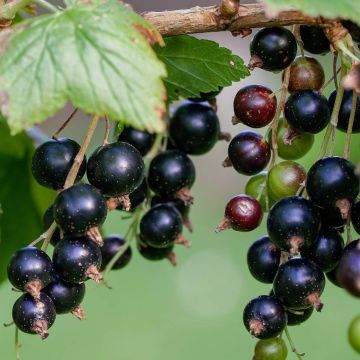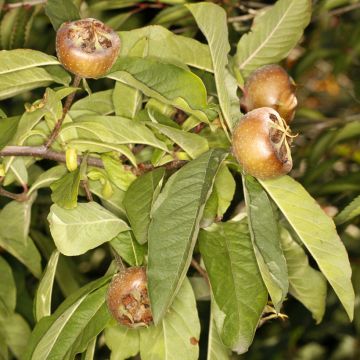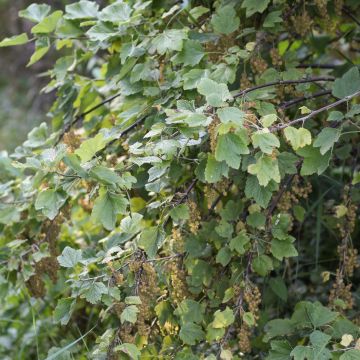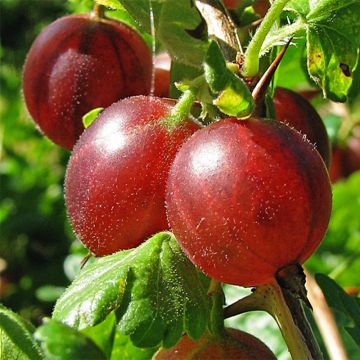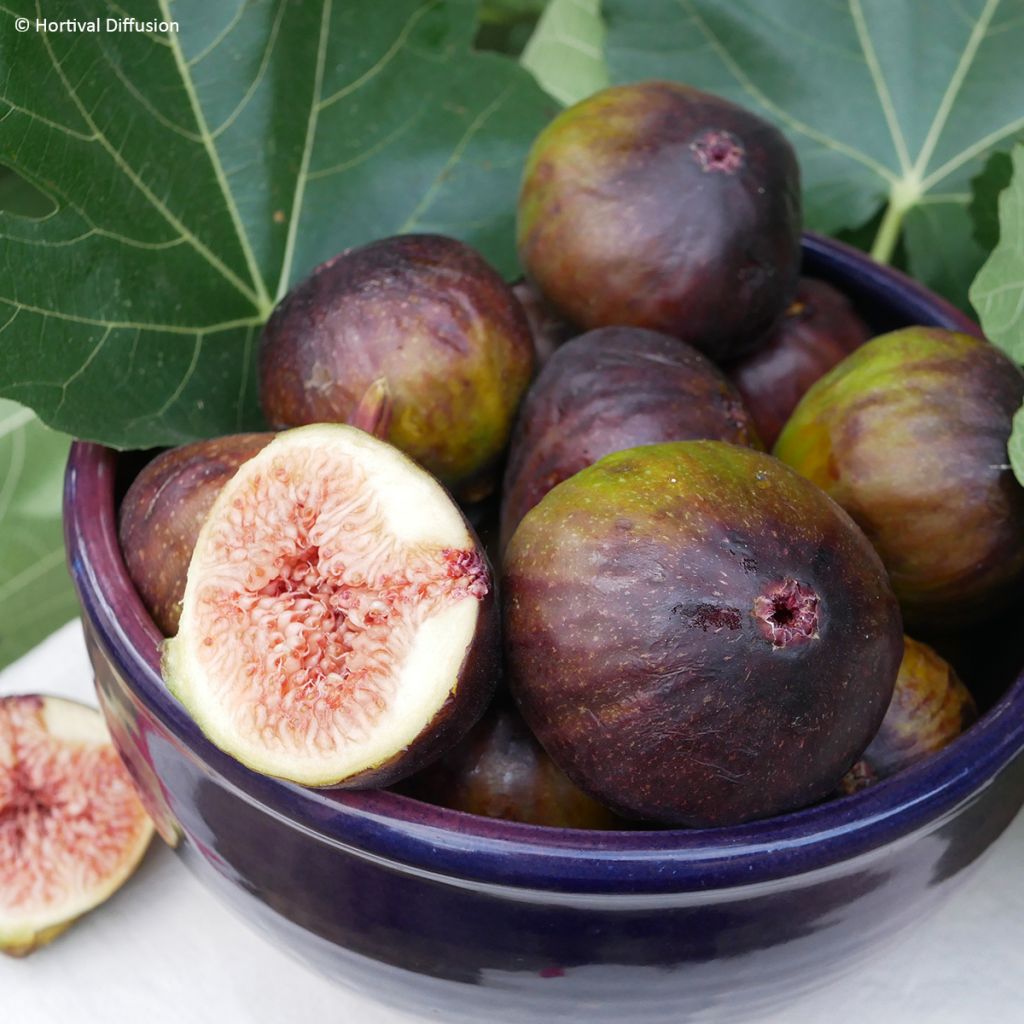

Ficus carica Rouge de juillet
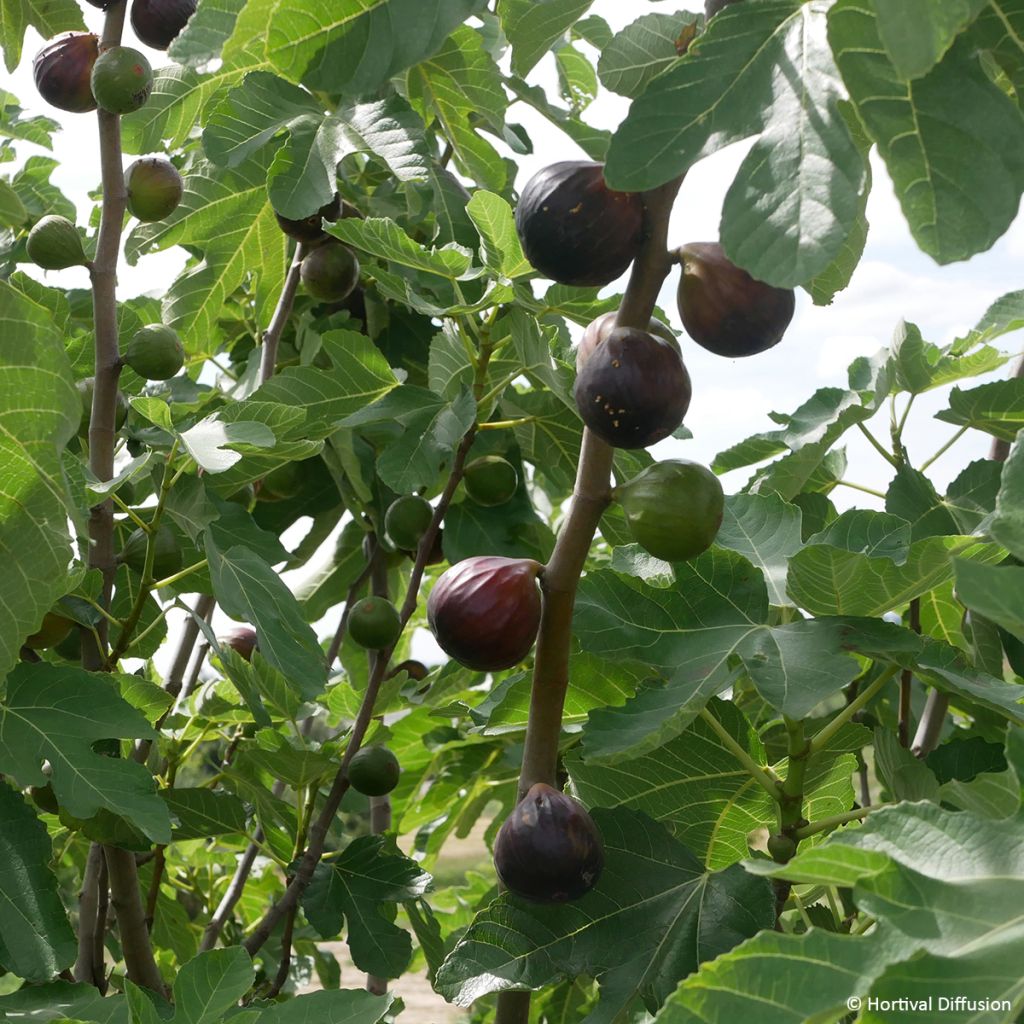

Ficus carica Rouge de juillet
Ficus carica Rouge de juillet
Ficus carica Rouge de juillet® 'Minfigfor'
fig
Why not try an alternative variety in stock?
View all →This plant carries a 6 months recovery warranty
More information
We guarantee the quality of our plants for a full growing cycle, and will replace at our expense any plant that fails to recover under normal climatic and planting conditions.
Oversize package: home delivery by special carrier from €6.90 per order..
Express home delivery from €8.90.
Delivery to Corse prohibited: UE law prohibits the import of this plant from mainland France to Corse as part of the fight against Xylella fastidiosa. Please accept our sincere apologies.
More information
Description
Ficus carica Rouge de juillet is known for its very large fruits weighing 100 to 150 g over two harvests: first in summer, around mid-July, and then again in early autumn. Its moderate growth makes it the ideal choice for enhancing small gardens or limited spaces, whether grown in the ground or in a pot, provided that it is large enough. When fully ripe, the elongated figs develop distinct reddish hues under the sun. Their pink flesh is juicy, deliciously sweet, creamy, and subtly fragrant. It is rich in flavour and contains numerous small seeds (achenes). They can be enjoyed fresh or prepared in various ways, such as in compotes, jams, or incorporated into pastries and savoury dishes. This robust, productive, cold-resistant variety is not very susceptible to diseases.
Fig trees should be planted in autumn-winter, avoiding periods of frost, but can also be done in spring in colder regions.
The Fig tree, Ficus carica in Latin, belongs to the Moraceae family and originates from warm regions ranging from the Mediterranean to Central Asia. Generally, it does not exceed three to four metres high with a fairly twisted trunk and a bushy habit. The deciduous leaves are rough and hairy, reaching up to 25 cm long and divided into three to seven lobes with variable shapes. The underside of the leaf is velvety with prominent veins. The stems, leaves, and fruits contain a fairly irritating white latex. The wood, with its grey and smooth bark, is soft, spongy, and hollow. The fig tree's spreading roots are powerful. Fig trees are classified in two varieties:
— Unifere varieties, producing a single, abundant harvest each year in late summer, between mid-August and late September.
— Biferous varieties, fruiting twice a year. They first produce figs, called "flower figs," in early summer, around June-July, appearing on the previous year's wood, and then "autumn figs," which form on the new shoots of the year and ripen around September.
The 'Minfigfor' variety is marketed under the trade names ROUGE DE JUILLET® or RED JULY. This recent creation is the result of the research of Isabelle and Jean-Yves Forest, the managers of Pépinières Forest, located in Anjou in Louresse Rochemenier, the breeder of the Gerard Depardieu rose. This biferous variety abundantly produces large "flower figs" weighing approximately 100 to 150 g in July, and then smaller "autumn figs" weighing 80 to 100 g in September. The ripening periods vary depending on the climate and sunlight. The elongated figs take on reddish-purple hues when fully ripe. Under a thin skin, there is tender, juicy, sweet, and fragrant pink flesh, with few seeds. Harvesting over several days to ensure that the figs are picked at their peak ripeness and consumed with maximum flavour. Ficus carica 'Minfigfor' is a self-fertile and parthenocarpic variety, fruiting without fertilisation. It does not need other Fig tree plants or the intervention of the fig wasp, the fig tree's pollinating insect, which is too sensitive to survive in cold climates.
The fig reveals all its delicacy and creaminess when bathed in the sun. It also makes a change in desserts such as tarts, clafoutis, and compotes or savoury dishes accompanied by goat cheese, cured ham, foie gras, or served with poultry and white meats. Its delicate and pronounced flavour can be enhanced with honey. It also pairs well with sweet fruits such as cherries, strawberries, raspberries, blackberries, currants, blueberries, and grapes. Figs are one of the best fruits for making jams due to their delicate taste, richness, and remarkable sweetness.
Figs are rich in fibre, have laxative properties, and the seeds aid digestion. They are rich in minerals, trace elements, and vitamin B. After harvesting, it is not a good idea to store them in the refrigerator, as the skin can suffer from moisture and condensation and the flavour will not be as good.
The Fig tree is often praised as one of the most attractive fruit trees, with its distinctive foliage giving it an ornamental character and providing pleasant shade during hot summer days. For the best results, choose a location sheltered by a wall to protect it from harsh winters, with a south or southwest exposure. In the southern regions, it pairs well with Pomegranate trees, White Mulberry trees, and Japanese Medlar trees. In the north, companions such as Quince trees, Akebia quinata, and Feijoa, which are robust and exotic, are ideal associations. It is important to consider its mature size to determine the appropriate spacing when planting. Although the roots generally do not damage modern constructions, they can affect dry stone walls or those built with lean mortars in an old style.
Among all the varieties of Fig trees, it is important to choose the right variety based on the climate, garden size and planned use of the fruits.
Report an error about the product description
Ficus carica Rouge de juillet in pictures
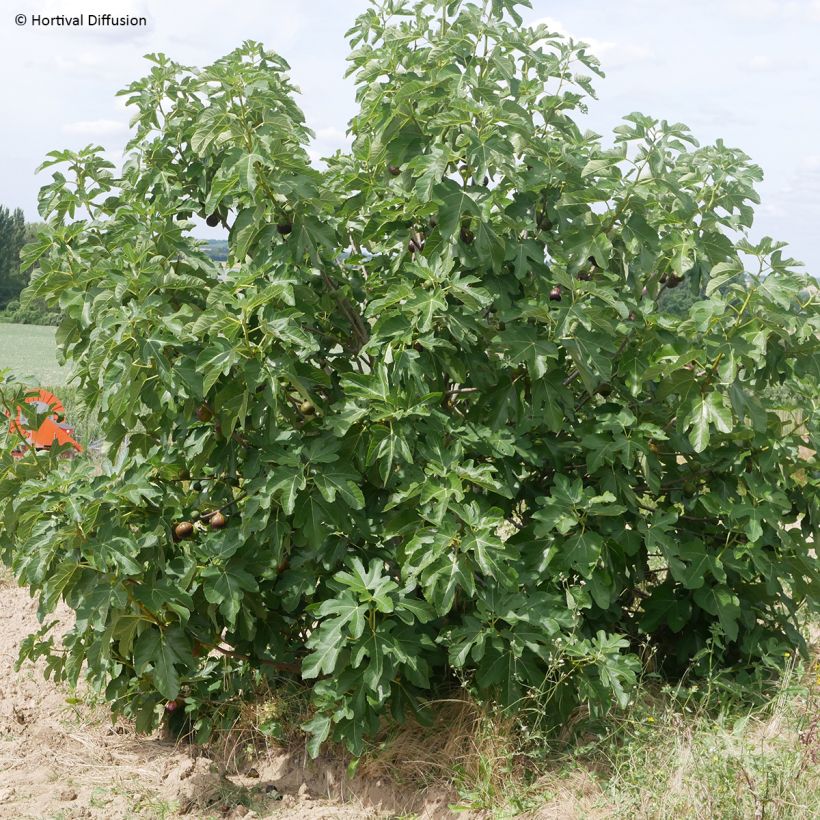

Plant habit
Fruit
Flowering
Foliage
Botanical data
Ficus
carica
Rouge de juillet® 'Minfigfor'
Moraceae
fig
Ficus carica ‘Red July’
Cultivar or hybrid
Other Fig trees
Planting and care
The Fig tree adapts to all types of soil, even poor, stony, and dry, or rocky, but prefers deep, loose soil with a sufficiently high limestone content. It requires a sunny exposure, sheltered from strong winds, especially further north. In summary, the fig tree likes to have its feet in the water and its head in the sun, especially while the fruits ripen in summer. When planting, place a layer of gravel at the bottom of the planting hole and add a mixture of garden soil and well-rotted compost or soil.
During the first two years after planting, it will be necessary to ensure that it does not lack water, especially during the summer period, as its root system, although capable of drawing water deeply from the soil, is not sufficiently developed. It is a tree that is not well adapted to mountain climates, where its success is a challenge. It can be planted from November to the end of March, outside of freezing periods. In colder regions, it is better to plant early in the spring. It is a hardy tree, even though the aboveground parts can be destroyed by the cold (young branches from -15-17°C, flower buds from -10-12°C), it will regrow from the crown to -20°C.
The Fig tree is not very susceptible to diseases and pests.
Planting period
Intended location
Care
This item has not been reviewed yet - be the first to leave a review about it.
Easy-grow fruit trees
Haven't found what you were looking for?
Hardiness is the lowest winter temperature a plant can endure without suffering serious damage or even dying. However, hardiness is affected by location (a sheltered area, such as a patio), protection (winter cover) and soil type (hardiness is improved by well-drained soil).

Photo Sharing Terms & Conditions
In order to encourage gardeners to interact and share their experiences, Promesse de fleurs offers various media enabling content to be uploaded onto its Site - in particular via the ‘Photo sharing’ module.
The User agrees to refrain from:
- Posting any content that is illegal, prejudicial, insulting, racist, inciteful to hatred, revisionist, contrary to public decency, that infringes on privacy or on the privacy rights of third parties, in particular the publicity rights of persons and goods, intellectual property rights, or the right to privacy.
- Submitting content on behalf of a third party;
- Impersonate the identity of a third party and/or publish any personal information about a third party;
In general, the User undertakes to refrain from any unethical behaviour.
All Content (in particular text, comments, files, images, photos, videos, creative works, etc.), which may be subject to property or intellectual property rights, image or other private rights, shall remain the property of the User, subject to the limited rights granted by the terms of the licence granted by Promesse de fleurs as stated below. Users are at liberty to publish or not to publish such Content on the Site, notably via the ‘Photo Sharing’ facility, and accept that this Content shall be made public and freely accessible, notably on the Internet.
Users further acknowledge, undertake to have ,and guarantee that they hold all necessary rights and permissions to publish such material on the Site, in particular with regard to the legislation in force pertaining to any privacy, property, intellectual property, image, or contractual rights, or rights of any other nature. By publishing such Content on the Site, Users acknowledge accepting full liability as publishers of the Content within the meaning of the law, and grant Promesse de fleurs, free of charge, an inclusive, worldwide licence for the said Content for the entire duration of its publication, including all reproduction, representation, up/downloading, displaying, performing, transmission, and storage rights.
Users also grant permission for their name to be linked to the Content and accept that this link may not always be made available.
By engaging in posting material, Users consent to their Content becoming automatically accessible on the Internet, in particular on other sites and/or blogs and/or web pages of the Promesse de fleurs site, including in particular social pages and the Promesse de fleurs catalogue.
Users may secure the removal of entrusted content free of charge by issuing a simple request via our contact form.
The flowering period indicated on our website applies to countries and regions located in USDA zone 8 (France, the United Kingdom, Ireland, the Netherlands, etc.)
It will vary according to where you live:
- In zones 9 to 10 (Italy, Spain, Greece, etc.), flowering will occur about 2 to 4 weeks earlier.
- In zones 6 to 7 (Germany, Poland, Slovenia, and lower mountainous regions), flowering will be delayed by 2 to 3 weeks.
- In zone 5 (Central Europe, Scandinavia), blooming will be delayed by 3 to 5 weeks.
In temperate climates, pruning of spring-flowering shrubs (forsythia, spireas, etc.) should be done just after flowering.
Pruning of summer-flowering shrubs (Indian Lilac, Perovskia, etc.) can be done in winter or spring.
In cold regions as well as with frost-sensitive plants, avoid pruning too early when severe frosts may still occur.
The planting period indicated on our website applies to countries and regions located in USDA zone 8 (France, United Kingdom, Ireland, Netherlands).
It will vary according to where you live:
- In Mediterranean zones (Marseille, Madrid, Milan, etc.), autumn and winter are the best planting periods.
- In continental zones (Strasbourg, Munich, Vienna, etc.), delay planting by 2 to 3 weeks in spring and bring it forward by 2 to 4 weeks in autumn.
- In mountainous regions (the Alps, Pyrenees, Carpathians, etc.), it is best to plant in late spring (May-June) or late summer (August-September).
The harvesting period indicated on our website applies to countries and regions in USDA zone 8 (France, England, Ireland, the Netherlands).
In colder areas (Scandinavia, Poland, Austria...) fruit and vegetable harvests are likely to be delayed by 3-4 weeks.
In warmer areas (Italy, Spain, Greece, etc.), harvesting will probably take place earlier, depending on weather conditions.
The sowing periods indicated on our website apply to countries and regions within USDA Zone 8 (France, UK, Ireland, Netherlands).
In colder areas (Scandinavia, Poland, Austria...), delay any outdoor sowing by 3-4 weeks, or sow under glass.
In warmer climes (Italy, Spain, Greece, etc.), bring outdoor sowing forward by a few weeks.

































